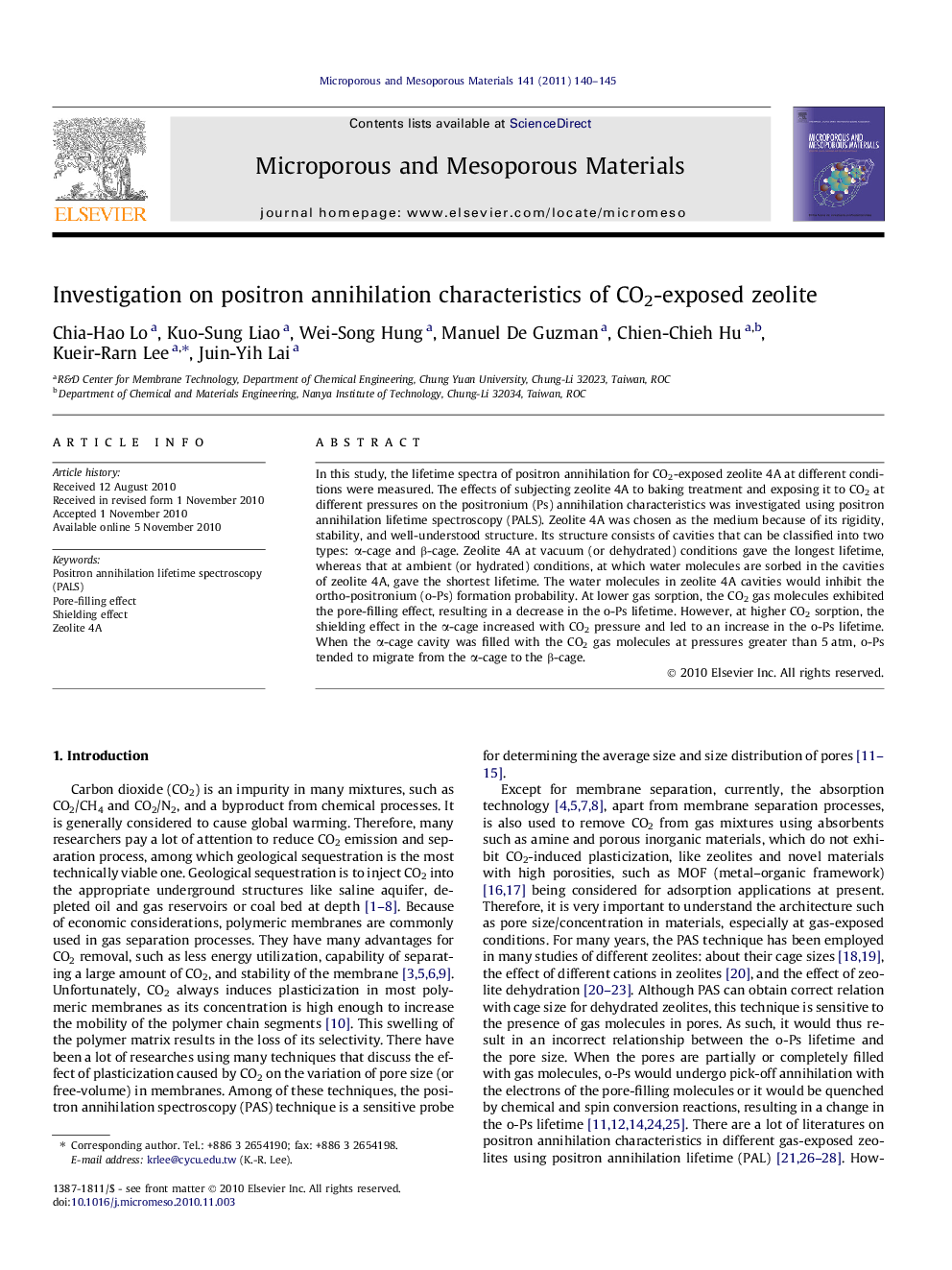| کد مقاله | کد نشریه | سال انتشار | مقاله انگلیسی | نسخه تمام متن |
|---|---|---|---|---|
| 75434 | 49115 | 2011 | 6 صفحه PDF | دانلود رایگان |

In this study, the lifetime spectra of positron annihilation for CO2-exposed zeolite 4A at different conditions were measured. The effects of subjecting zeolite 4A to baking treatment and exposing it to CO2 at different pressures on the positronium (Ps) annihilation characteristics was investigated using positron annihilation lifetime spectroscopy (PALS). Zeolite 4A was chosen as the medium because of its rigidity, stability, and well-understood structure. Its structure consists of cavities that can be classified into two types: α-cage and β-cage. Zeolite 4A at vacuum (or dehydrated) conditions gave the longest lifetime, whereas that at ambient (or hydrated) conditions, at which water molecules are sorbed in the cavities of zeolite 4A, gave the shortest lifetime. The water molecules in zeolite 4A cavities would inhibit the ortho-positronium (o-Ps) formation probability. At lower gas sorption, the CO2 gas molecules exhibited the pore-filling effect, resulting in a decrease in the o-Ps lifetime. However, at higher CO2 sorption, the shielding effect in the α-cage increased with CO2 pressure and led to an increase in the o-Ps lifetime. When the α-cage cavity was filled with the CO2 gas molecules at pressures greater than 5 atm, o-Ps tended to migrate from the α-cage to the β-cage.
Table of contents (TOC) image.Figure optionsDownload as PowerPoint slideResearch highlights
► The effects of the zeolite at different conditions on the positronium annihilation.
► At lower gas sorption, PALS analysis exhibited the pore-filling effect.
► At higher CO2 sorption, the shielding effect in the α-cage was displayed in PALS.
Journal: Microporous and Mesoporous Materials - Volume 141, Issues 1–3, May 2011, Pages 140–145